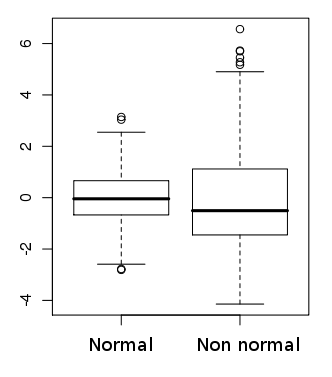Quantitative Workshops
The workshop features three quantitative workshops, team structured activities to get you thinking about biology with a more numerical approach. The optional pre-course reading will deepen your apreciation of the discussions.
Data Analysis and Statistics
Learning Goals
- Thinking
- Critically read and assess a data analysis presented in a paper
- Evaluate scientific claims and understand degrees of belief
- Doing
- Systematically assess data collection, presentation, and analysis using a catalogue of criteria
- Feeling
- Gain confidence in understanding and performing data analyses
- Appreciate the importance of decisions made in design, analysis and presentation of data
- Be wary of commonly made mistakes
Abstract
How do we arrive at new knowledge from observing the world? How can we assess the value of empirical results obtained by other people and of the conclusions drawn from them? This workshop teaches students what to look for, from a data analysis perspective, when reading a scientific paper. How was the data collected? How are results presented? What was the hypothesis to be tested? How did authors account for confounding factors? What conclusions do the data support? We will discuss a list of questions and criteria and practise applying them to case studies from the scientific literature. Students will thus be prepared and empowered to assess the scientific literature critically and to apply high standards of quality to their own work.

Images in Biology
Learning Goals
- Thinking
- Reflect on the choices made when producing and processing an image
- Understand the relationships between data and images
- Compare and contrast different ways to represent the same data
- Doing
- Produce and process image according to visualisation principles
- Feeling
- Appreciate the beauty of information
- Strive for clarity and truth
Abstract
How do we make data visible, both to humans and to computers? How are numbers and images related? Among various possible representations of a given dataset, which should be chosen? How do successful visual design choices relate to what we know about image processing in the brain? This workshop aims to make students aware of fundamental questions around data visualisation and puts them in a position to make informed and thoughtful choices when presenting their own data.
(Optional) pre-course reading
-
PLoS Biol, 13(4): e1002128.
Further resources
- Data visualisation pinterest board
-
Second edition, Graphics Press LLC.

Modelling and Simulation
Learning Goals
- Thinking
- Reproduce the steps in going from a conceptual model to a computational model
- Discuss the assumptions behind a model
- Recognise a situation where simulations are beneficial
- Doing
- Build simple models using the COPASI simulation software
- Navigate BioModels Database
- Feeling
- Appreciate the value of modelling and simulations in biology
- Feel empowered to use simulations in their own work
Abstract
Can a computational model give us information about a system that goes beyond what we already know about it? This workshop presents students with the concept of modelling and simulation and introduces them to an easy-to-use software package. We will discuss strenghts and limiations of computational models and the importance of model sharing. Students will also get to know BioModels database, one of the biggest repositories of biological models in the SBML standard format. An hour of class time is devoted to hands-on practice. Students can choose from a list of exercises or attempt to model a system they are interested in.
(Optional) pre-course reading
-
Nature Reviews Genetics, 16, 146-158.
Further resources
- Modelling success stories from Nicolas Le Novère's blog
- Model of the Month on BioModels database




